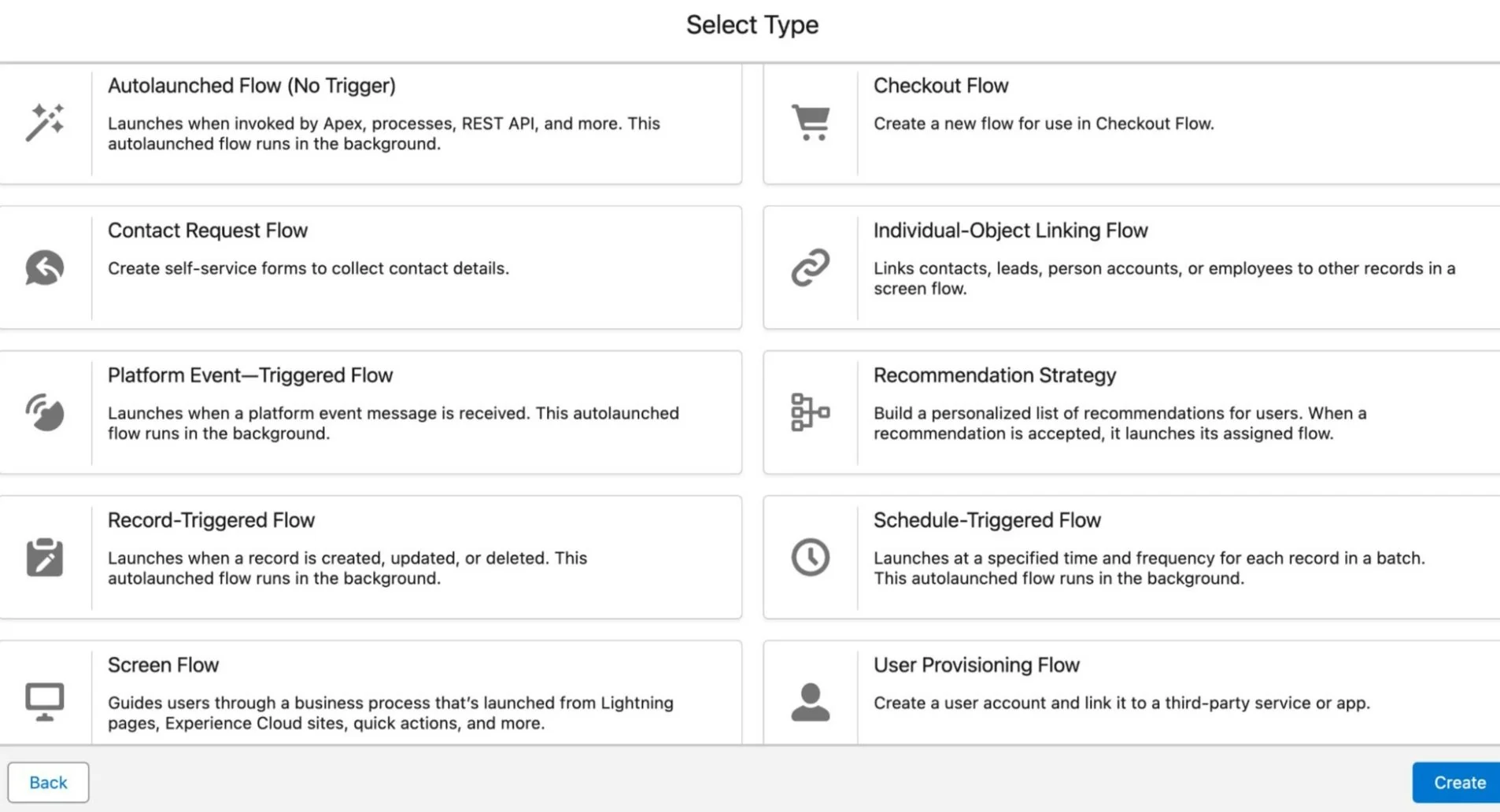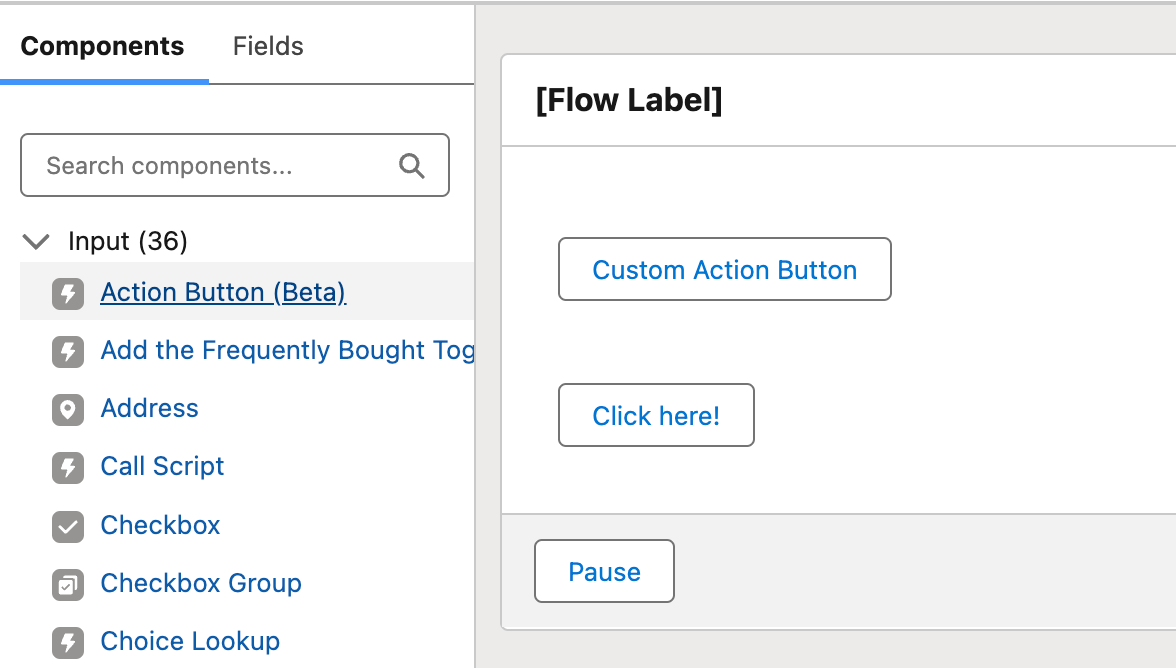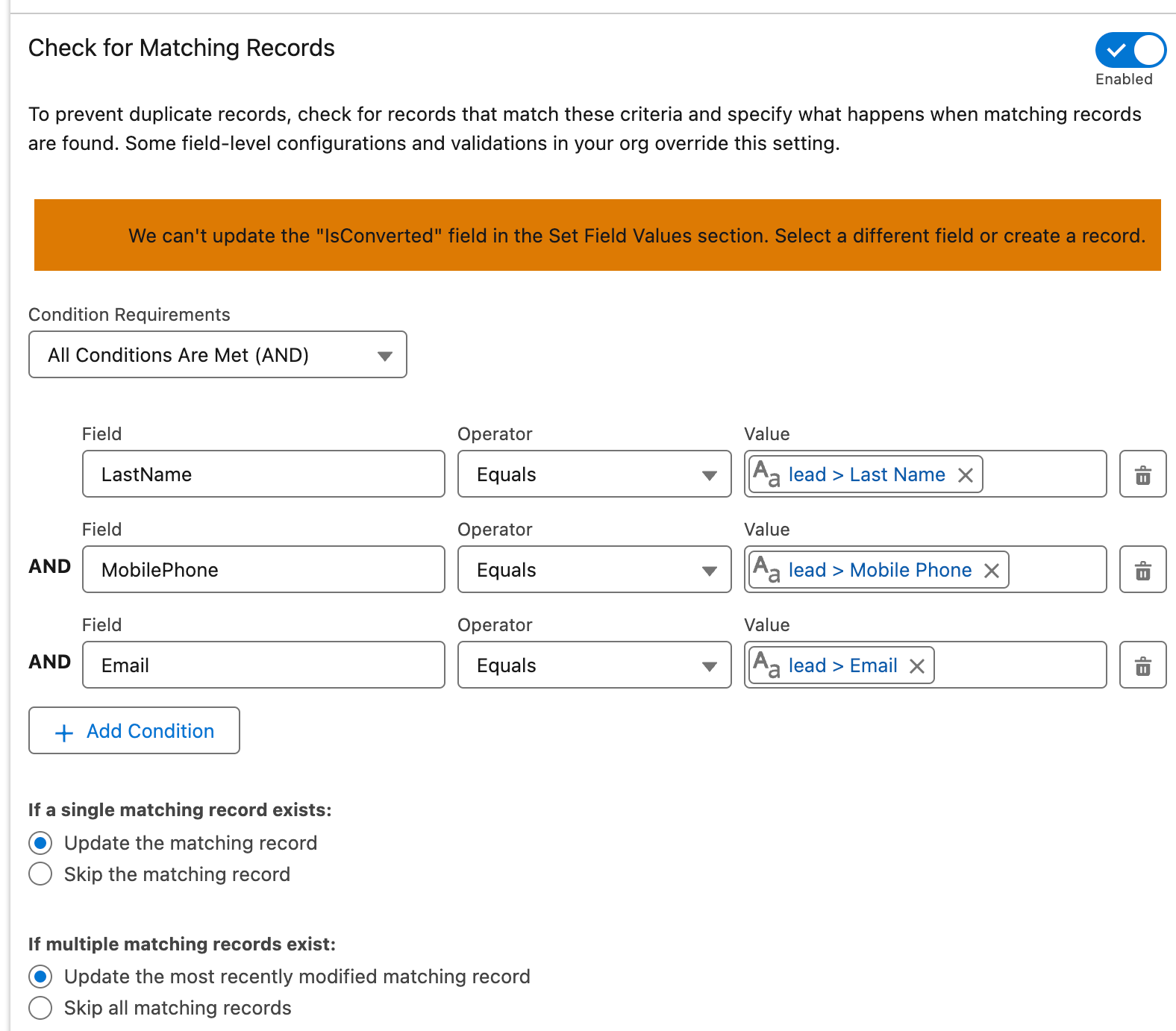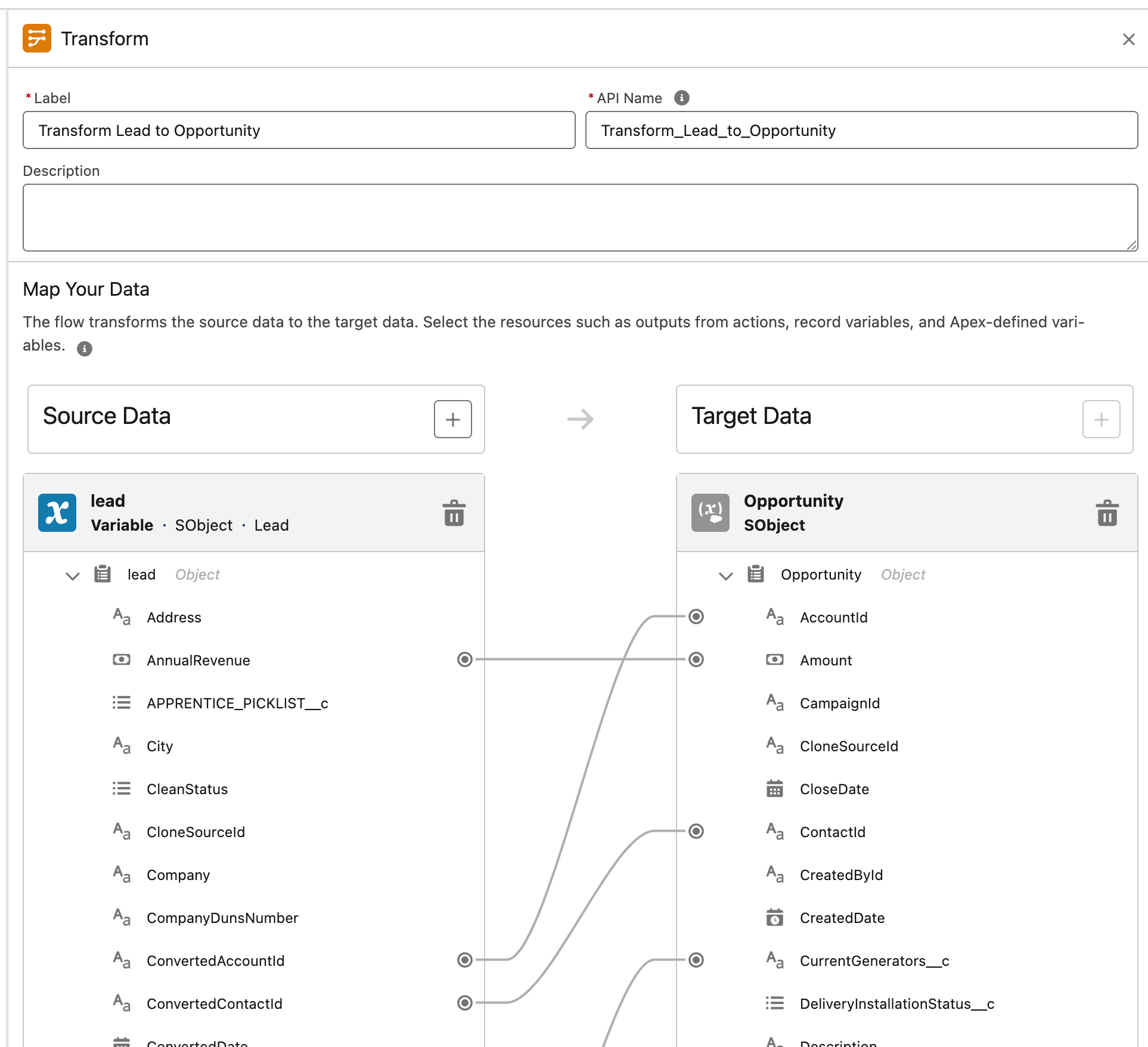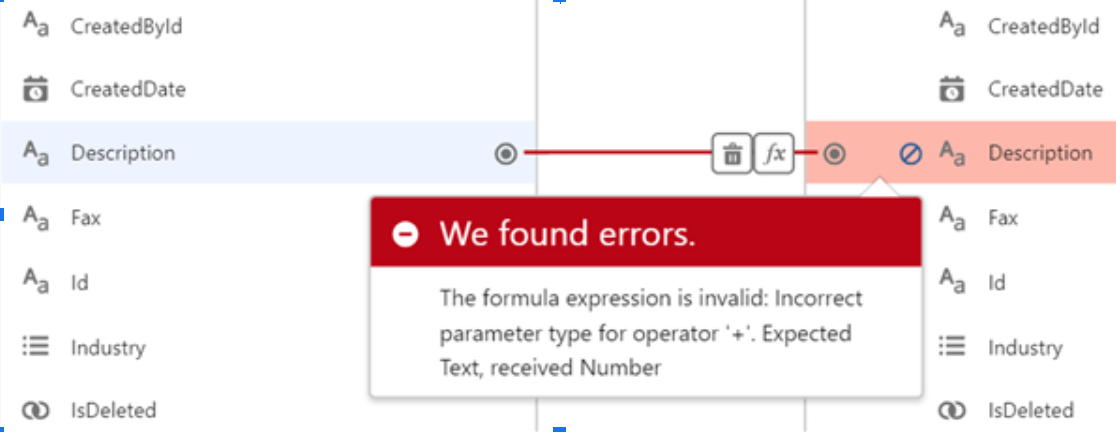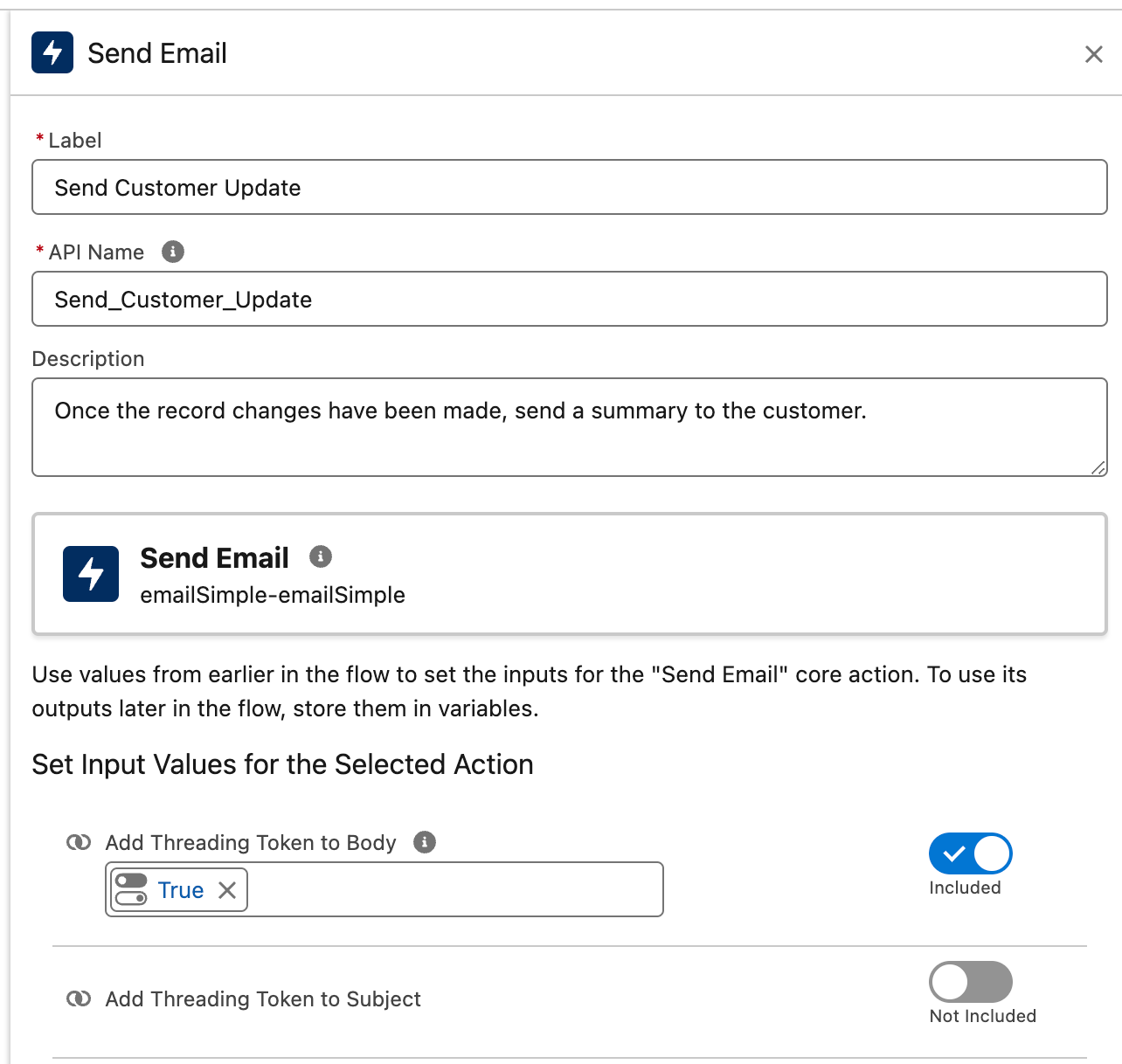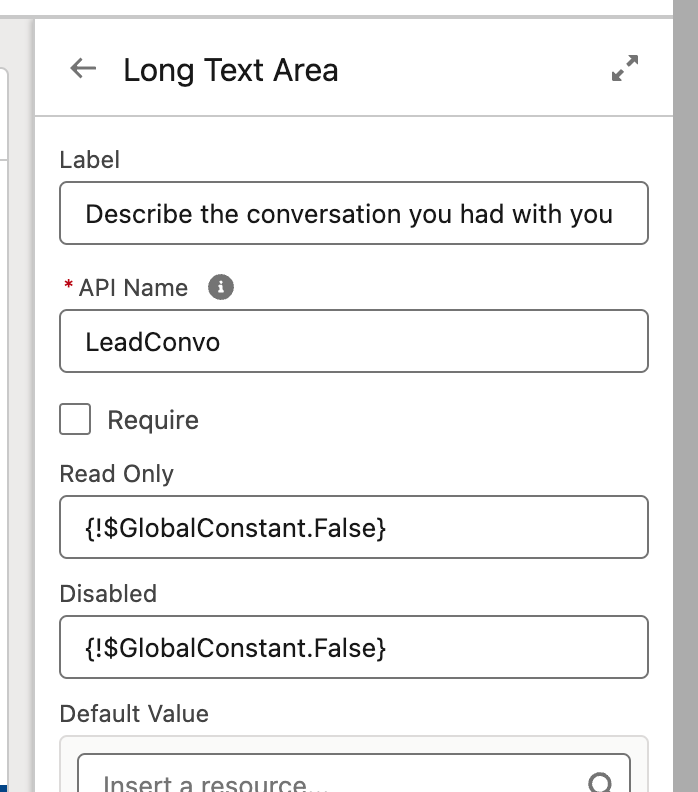Top Salesforce Flow Features in Summer ’24 Release
The summer ‘24 release is in full swing and there’s so much to be excited about. One of the shining stars this season is none other than Flow, our favorite automation tool that just keeps getting better and better.
In this blog, we’ve discussed Salesforce Flow new features and enhancements. Whether you’re a Flow newbie or a seasoned pro, these new flow updates are set to make your life easier and your workflows smoother.
Let's dive into the details and discover how these changes, aligned with Salesforce flow best practices, can elevate your Salesforce experience.
1. New Flow Creation Wizard
There have been some changes to the flow creation wizard. Now, “instead of scrolling through all types and templates in one window, you’re prompted to decide whether you want to do”. You can:
Start from scratch, or
Use a template
New Flow Creation Wizard (Source: Salesforce)
While this has made flow creation a bit different and more engaging, the number of clicks and pages has also slowed down the experience for admins.
Where: This change applies to Lightning Experience and Salesforce Classic in Essentials, Professional, Enterprise, Unlimited, and Developer editions.
How: From the Flows section in Setup, click New Flow, or from the Automation Lightning app, click New. Select the type of automation you want to build, then click Next.
2. More Flow Types and the Ability to Search
Flow is becoming more and more powerful with every release. The introduction of new Flow types is a clear testament to that. This release drops new flow types besides standard screen flows, auto-launched flows, and triggered flows.
More Flow Types to Choose From (Source: Salesforce)
To use a template, you can click on ‘Use a Template’ and it will take you to the next window where you can search for your template to find it faster.
3. Unlimited Paused Flows
Salesforce has removed the limits on the number of Flow interviews you can pause. Previously the limit was 30,000 for Essentials and Professionals editions and 50,000 for Enterprise and Unlimited editions.
Now there’s no limit for paused and waiting flow interviews. However, the number of paused and waiting flows can still be limited by the amount of storage available to your org.
Where: This change applies to Lightning Experience in Enterprise, Performance, Unlimited, and Developer editions.
4. Flow Status Indications
Salesforce Flow Builder now displays status indications, making it easier to see your Flow's status. Now you can see the status of your flow such as Active or Inactive and the last time modifications happened to a Flow.
Flow Status Indications Available
5. Action Button Component (Beta)
One of the most exciting Salesforce Flow new features is the Action Button Component.
Now you can add an Action Button component to a screen to run an auto-launched flow that can retrieve or crunch data. Then you can make the data available on your screen for other components.
Creating and Configuring Action Button (Source: Salesforce)
Here are a few use cases you’ll now be able to achieve all within a single screen.
Show related data: Turn chosen records (like accounts) into tables, radio buttons, or picklists that update based on your selection.
External system data: Grab product info from another system and let users pick from it within the Flow.
Smart picklists: Build picklists that change options based on other choices (like car make impacting car model options).
Summarize selections: Get quick summaries of user choices, like total amounts or minimum dates.
Now you can add an Action Button component to a screen to run an auto-launched flow that can retrieve or crunch data. Then make the data available on your screen for other components to use.
Adding an Action Button to a Screen (Source: Salesforce)
Where: This change applies to Lightning Experience and Salesforce Classic in Essentials, Professional, Enterprise, Performance, Unlimited, and Developer editions.
How: First build an auto-launched flow (retrieves & saves data). Next up, create a screen flow with a button launching the auto-launched flow. Then add an element to the screen that uses retrieved data. Finally, save & run the flow.
6. Flow Repeater Component Now Generally Available
The Flow Repeater component has been around since the last release but has been made generally available in Summer ‘24! In the Summer release, this feature got a major upgrade!
It can now include most standard Salesforce components, along with conditional visibility, input validation, and help text for a better user experience. Debugging flows with Repeaters is also easier thanks to new debug info.
Flow Repeater Component (Source: Salesforce)
Where: Available in Lightning & Classic (Essentials-Developer). Not supported in Classic flow runtime.
Why: The Repeater is now more powerful, allowing:
Custom & standard components
Referencing child component outputs within the Repeater
Conditional visibility, validation, and help text
Debugging info in Salesforce Flow Builder
User input reactivity
How: To use it, add the Repeater component to a Screen element in Flow Builder and add your desired child components within it.
7. Check for Duplicates Before Creating a Flow
Now you can check for duplicates before creating your flow. To prevent duplicate records, check for records that match a set of criteria in the Create Records element. Also, specify whether to skip or update matching records.
Here are key points to note:
If you choose to skip matching records, the flow doesn’t create or modify any records.
If you choose to update matching records, the flow modifies the records with the values that you provide.
Check for Duplicates Before Creating Flow (Source: Salesforce)
Where: This change applies to Lightning Experience and Salesforce Classic in Essentials, Professional, Enterprise, Performance, Unlimited, and Developer editions.
How: To build a flow that contains a Create Records element, open Flow Builder. In the Create Records pane, select to Check for Matching Records. Add one or more conditions. Choose to update or skip the corresponding records. Save the flow.
8. Transform Element Now Generally Available
Ditch the loop and assignments! Transform element lets you easily convert data from one format to another, just like its name suggests.
Now seamlessly map, transform, and optimize data from one format to another with the Transform element in Flow.
Where: Use Transform in screen flows, auto-launched flows with no triggers, and record-triggered flows.
Transform the Source Data to the Target Data (Source: Salesforce)
Previously, you received errors for the Transform element only when you saved the flow. Also, you can use your keyboard and screen reader to navigate the Transform element more easily. Previously, you couldn’t navigate source or target data or hear descriptions about mappings.
View the Mapping of a Misconfiguration Error (Source: Salesforce)
How: To view a mapping tip of a misconfiguration error, hover over the error icon shown next to a target data field or collection when you configure the Transform element in Salesforce Flow Builder.
9. Use Threading Tokens in Email
Email threading is a method used to organize email messages into a logical sequence, making it easier to follow conversations and understand the context of each message.
In Summer ‘24, Email Threading is natively supported in the Send Email Action feature. Now you can link together emails on the same topic, similar to how case replies get related directly to individual case records.
Use Threading Tokens in Email (Source: Salesforce)
Where: This change applies to Lightning Experience in Essentials, Professional, Enterprise, Performance, Unlimited, and Developer editions.
How: In Flow Builder, access the Send Email core action. Add a threading token to the email subject or body and include a Related Record ID. If the related record is a case, Email-to-Case handles replies automatically. For non-case emails, use an Apex Email Service and the EmailMessages.getRecordIdFromEmail function to match the token.
10. Set Components to Read Only/Disabled
Screen elements that now support the ability to be set to Read Only or Disabled states in Summer ‘24.
You can set the following to be Read Only or Disabled:
Text/Long Text Area
Date/Date & Time
Number
Currency
Password
Address
Set Components to Read Only/Disabled (Source: Salesforce)
11. New Lock Record Flow Action
Starting Summer '24, lock/unlock records in Flows! Drag the "Lock Record" action, choose lock or unlock, specify the record ID, and define who can still edit it (Users/Groups/Queues).
New Lock Record Flow Action (Source: Salesforce)
Where: This change applies to Lightning Experience, Salesforce Classic (not available in all orgs), and all versions of the mobile app in Essentials, Professional, Enterprise, Performance, Unlimited, and Developer editions.
12. Flow's Address Component Gets a Boost!
Summer '24 brings exciting enhancements to the Address component in Flows. Now admins can:
Control field states: Set addresses as Required or Disabled, similar to other fields. This can even be done dynamically during the flow!
Google Maps integration: Search for addresses directly within the Flow for a smoother user experience (enable this during configuration).
Google Maps Integration for Easy Address Search (Source: Salesforce)
Conclusion
The Summer ‘24 release brought a suite of huge improvements to the most beloved tools for admins — Salesforce Flow. This release is a great balance of minor improvements, bug fixes, and Salesforce Flow new features. Once these functionalities and enhancements trickle down to your org, it is going to make your life as an Admin/Dev/business user much easier and nicer too!
Further Reading
1. Find the Type of Automation to Build with Ease
2. Have Unlimited Paused and Waiting Flows
4. Collect User Input to Build a List of Records from a Screen (Generally Available)
5. Check for Duplicates Before Creating Records in a Flow
6. Transform Your Data in Flows (Generally Available)
7. Use Threading Tokens in Emails
8. Restrict User Input on Screen Components with the Disabled and Read Only Fields
9. Lock and Unlock Records with an Action
11. New Lock Record Flow Action
12. Flow's Address Component Gets a Boost!
13. Top 10 Salesforce Flow Builder Enhancements: Spring ‘24 Release Unveiled



